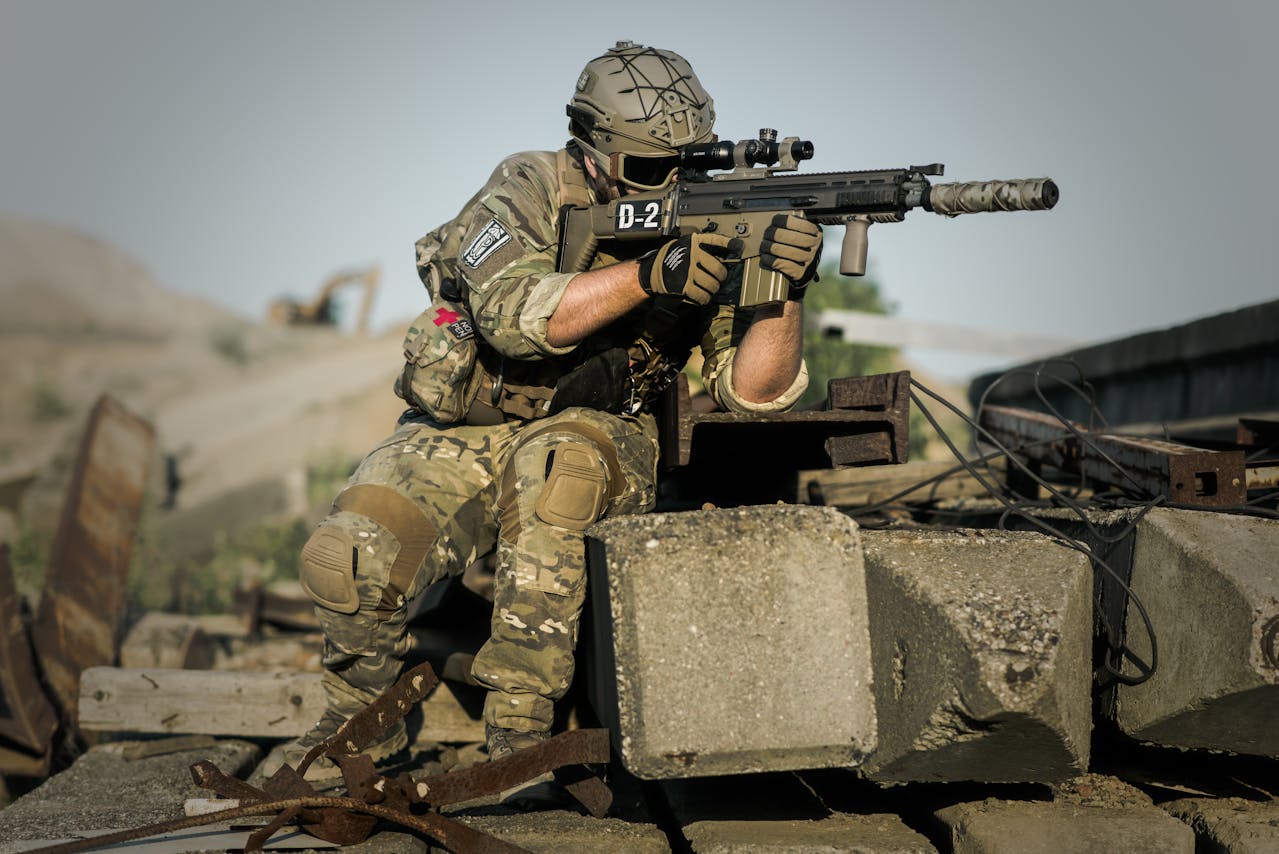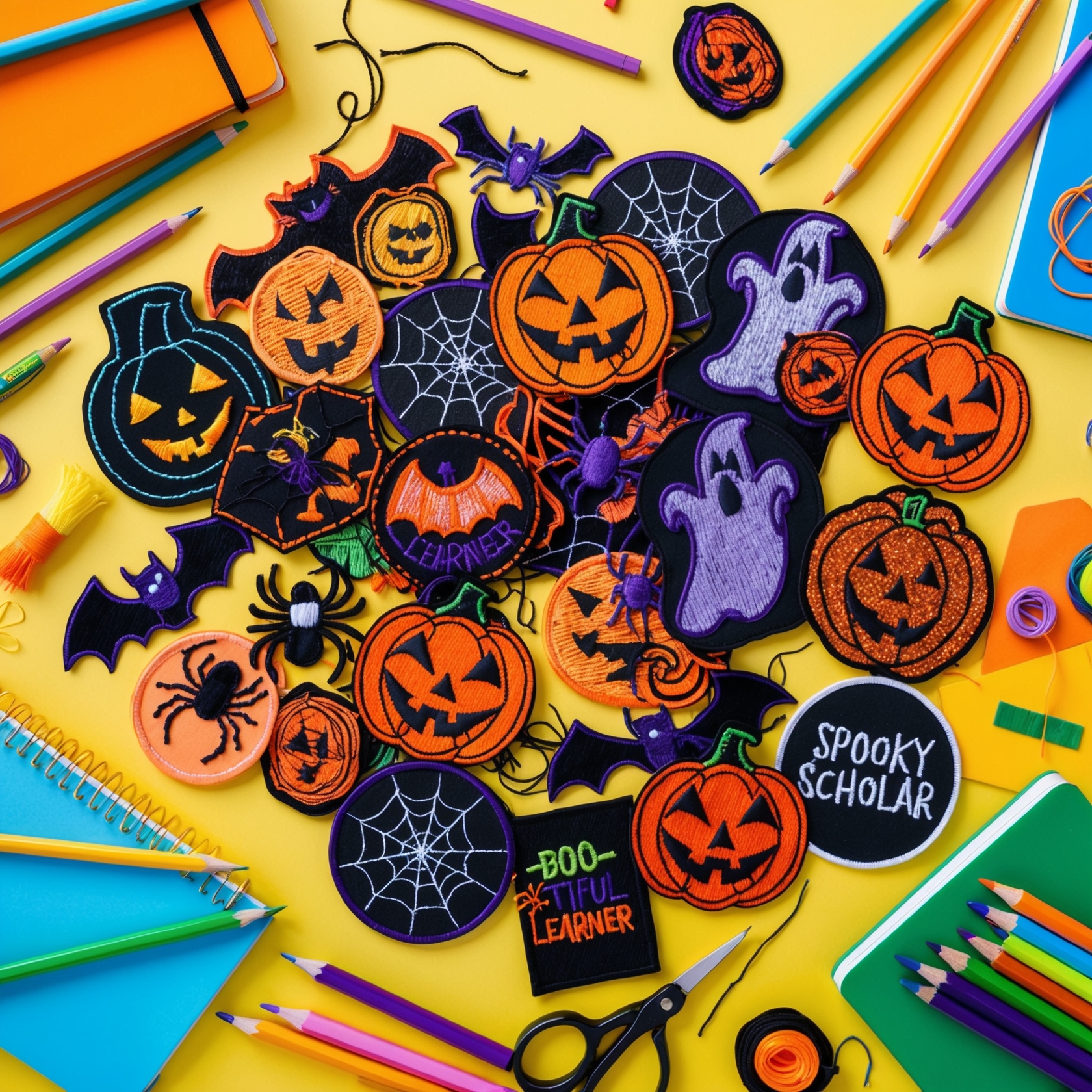The Significance of Military Patches
Military patches are more than just decorative elements on uniforms; they are symbols of identity, pride, and belonging within the armed forces. Each branch of the military has its own unique patches that signify unit affiliation, rank, achievements, and service history. These patches play a crucial role in preserving the identity and heritage of military units, fostering camaraderie among service members, and honoring their contributions.
In this article, we will explore the role of branch-specific military patches, delving into their history, design, significance, and impact on military culture. Whether you are a military service member, a historian, or a patch enthusiast, this comprehensive guide will provide valuable insights into the world of military patches.
1. The History of Military Patches
Early Origins
The use of patches to signify military affiliation dates back to ancient times. Early warriors used symbols and insignias on their shields and armor to identify their units and distinguish themselves from enemies. These early forms of military patches laid the foundation for the intricate designs and significance of modern military patches.
Example: Roman legions used specific symbols and standards to identify their units, similar to how modern military patches are used today.
World War I and the Introduction of Modern Patches
The widespread use of military patches began during World War I when the U.S. Army introduced shoulder sleeve insignia (SSI) to identify units. These patches were designed to foster unit pride and camaraderie among soldiers, and their use quickly spread to other branches of the military.
Example: The 81st Infantry Division, known as the “Wildcat Division,” was one of the first to receive an official patch featuring a wildcat, symbolizing the division’s spirit and tenacity.
2. The Design and Significance of Branch-Specific Patches
Army Patches
The U.S. Army uses a wide variety of patches to denote different units, ranks, and achievements. These patches are typically worn on the left shoulder of the uniform and include elements that represent the unit’s history, mission, and values.
Example: The 101st Airborne Division’s patch features an eagle, symbolizing the unit’s airborne capabilities and fierce fighting spirit. The patch is known as the “Screaming Eagle” and is one of the most recognizable in the Army.
Navy Patches
Navy patches often include symbols related to naval warfare, such as anchors, ships, and waves. These patches represent different ships, squadrons, and commands, highlighting the unique identity and heritage of each unit.
Example: The patch for the USS Enterprise (CVN-65), a historic aircraft carrier, features an image of the ship along with its nickname, “Big E.” This patch honors the ship’s storied history and contributions to naval warfare.
Air Force Patches
Air Force patches are designed to reflect the unit’s mission and capabilities. These patches often include imagery related to aviation, such as aircraft, wings, and stars, symbolizing the Air Force’s role in air and space superiority.
Example: The patch for the 1st Fighter Wing features a stylized eagle with outstretched wings, representing the unit’s dominance in air combat and its commitment to excellence.
Marine Corps Patches
Marine Corps patches are known for their bold designs and symbolism. These patches often incorporate elements like eagles, globes, and anchors, reflecting the Marine Corps’ values of honor, courage, and commitment.
Example: The patch for the 1st Marine Division features a blue diamond with a red numeral “1” and the word “Guadalcanal,” commemorating the division’s pivotal role in the Battle of Guadalcanal during World War II.
Coast Guard Patches
Coast Guard patches highlight the unique mission of the service, focusing on maritime safety, security, and stewardship. These patches often feature symbols like anchors, lighthouses, and waves, representing the Coast Guard’s commitment to protecting the nation’s waters.
Example: The patch for Coast Guard Sector New York features the iconic Statue of Liberty, symbolizing the unit’s role in safeguarding one of the nation’s busiest ports.
3. The Role of Military Patches in Preserving Unit Identity
Fostering Camaraderie and Esprit de Corps
Military patches play a crucial role in fostering camaraderie and esprit de corps among service members. Wearing the same patch creates a sense of unity and belonging, reinforcing the bonds between members of the same unit.
Example: Members of the 82nd Airborne Division wear their distinctive “AA” patch with pride, knowing that it symbolizes their shared commitment to airborne operations and their storied history.
Honoring Heritage and Tradition
Patches help preserve the heritage and traditions of military units. They serve as reminders of past achievements and sacrifices, honoring the legacy of those who served before.
Example: The patch for the 1st Cavalry Division features a black horse head and a yellow background, symbolizing the unit’s cavalry roots and its significant contributions during conflicts such as the Vietnam War.
Recognizing Achievements and Service
Military patches also recognize individual and unit achievements, such as combat deployments, special operations, and training accomplishments. These patches serve as visible symbols of dedication and excellence.
Example: Air Force personnel who complete the rigorous training for the Combat Controller career field earn the distinctive red beret and patch, signifying their elite status and specialized skills.
4. Customizing and Creating Military Patches
Designing Custom Patches
Designing custom military patches involves careful consideration of symbolism, colors, and elements that represent the unit’s identity and mission. Collaboration between unit members and designers ensures that the patch accurately reflects the unit’s values and heritage.
Tips:
- Gather Input: Collect ideas and feedback from unit members to ensure the design resonates with the entire unit.
- Research History: Incorporate historical elements and symbols that reflect the unit’s past achievements and heritage.
- Professional Design: Work with a professional designer to create a polished and visually appealing patch.
Example: A National Guard unit collaborates with a designer to create a custom patch that includes their state emblem, the unit’s motto, and imagery representing their mission.
Choosing Quality Materials
High-quality materials are essential for creating durable and long-lasting military patches. Selecting the right fabrics, threads, and backing materials ensures that patches withstand the rigors of military service.
Tips:
- Embroidered Patches: Opt for embroidered patches for a classic, durable look with detailed designs.
- PVC Patches: Consider PVC patches for a modern, weather-resistant option that can handle harsh conditions.
- Backing Options: Choose appropriate backing options, such as Velcro or iron-on, based on how the patches will be worn or displayed.
Example: A Marine unit selects embroidered patches with reinforced stitching and durable backing to ensure they remain intact during field operations.
5. The Impact of Military Patches on Morale and Recognition
Boosting Morale
Receiving and wearing military patches boosts morale by providing visible recognition of achievements and service. Patches serve as reminders of the hard work, dedication, and sacrifices made by service members.
Example: A soldier who completes airborne training and earns the coveted “Jump Wings” patch experiences a significant boost in morale, knowing that their accomplishment is recognized and respected.
Enhancing Unit Pride
Military patches enhance unit pride by symbolizing the unique identity and achievements of each unit. They foster a sense of pride and ownership, motivating service members to uphold the unit’s values and reputation.
Example: Members of the 75th Ranger Regiment wear their “Ranger Tab” and unit patch with immense pride, reflecting their elite status and commitment to the Ranger Creed.
6. The Role of Patches in Military Ceremonies and Events
Ceremonial Presentations
Military patches are often presented during formal ceremonies and events, highlighting their significance and creating memorable moments for service members. These presentations reinforce the importance of the achievements being recognized.
Example: During a promotion ceremony, a Marine receives their new rank insignia patch in front of their peers and family, marking a significant milestone in their career.
Commemorative Events
Custom patches are also created for commemorative events, such as anniversaries, reunions, and memorials. These patches serve as lasting mementos that honor the service and sacrifices of military personnel.
Example: A Vietnam War veterans’ reunion features custom patches that commemorate the 50th anniversary of a significant battle, providing a meaningful keepsake for attendees.
7. Collecting and Preserving Military Patches
The Hobby of Patch Collecting
Collecting military patches is a popular hobby among veterans, historians, and enthusiasts. These collections provide a tangible connection to military history and heritage.
Tips:
- Research and Documentation: Research the history and significance of each patch in your collection, and document their origins and stories.
- Networking: Connect with other collectors, attend military memorabilia shows, and participate in online forums to expand your collection.
- Display and Preservation: Use appropriate display cases and storage methods to preserve the condition and integrity of your patches.
Example: A retired Air Force officer builds a collection of patches from different squadrons and commands they served with, creating a visual timeline of their military career.
Preserving Patch Collections
Proper preservation techniques are essential for maintaining the quality and appearance of military patches. Protecting patches from environmental damage and handling them with care ensures their longevity.
Tips:
- Acid-Free Materials: Store patches in acid-free containers, envelopes, or sleeves to prevent discoloration and deterioration.
- Climate Control: Keep patches in a climate-controlled environment, avoiding extreme temperatures and humidity.
- Gentle Cleaning: Use soft brushes and mild cleaning methods to remove dust and dirt from patches.
Example: A military museum uses acid-free display cases and climate control to preserve its extensive collection of military patches, ensuring they remain in pristine condition for future generations to study and appreciate.
Displaying Patch Collections
Displaying your patch collection allows you to share its historical significance and visual appeal with others. Thoughtful display methods enhance the presentation and protect patches from damage.
Tips:
- Shadow Boxes: Use shadow boxes to create three-dimensional displays that protect patches from dust and light while showcasing them attractively.
- Framed Displays: Frame patches with UV-protective glass to prevent fading from exposure to light. Arrange them thematically or chronologically for a cohesive look.
- Rotating Exhibits: If you have a large collection, rotate the patches on display to keep the exhibit fresh and minimize prolonged exposure to light.
Example: A collector frames a series of patches from different military campaigns, arranging them chronologically and adding labels that provide context and historical background for each patch.
8. The Emotional and Historical Significance of Military Patches
Personal Narratives and Memories
Military patches are deeply personal items that carry significant emotional weight for those who earned them. Each patch represents specific experiences, achievements, and memories from a service member’s career.
Tips:
- Storytelling: Encourage service members to share the stories behind their patches, creating a rich narrative that preserves their personal and unit histories.
- Memory Books: Create memory books that combine photographs, written accounts, and patches to document and celebrate military careers.
Example: A veteran creates a memory book that includes photos from their deployments, personal reflections, and the patches they earned, providing a comprehensive and personal account of their military service.
Preserving History
Military patches also serve as historical artifacts that offer insights into the evolution of military units, campaigns, and traditions. Collecting and preserving these patches helps maintain an important part of military history.
Tips:
- Historical Research: Research the historical context of each patch, including the units, missions, and conflicts they are associated with.
- Educational Displays: Use patches in educational displays that teach others about military history, unit lineage, and the significance of different campaigns.
Example: A history teacher uses a collection of military patches in the classroom to teach students about World War II, explaining the significance of each patch and the stories behind them.
9. The Role of Military Patches in Modern Armed Forces
Adaptation and Innovation
As military technology and tactics evolve, so do military patches. Modern patches incorporate advanced materials and designs that reflect the current capabilities and missions of today’s armed forces.
Example: Modern combat units often use patches made from durable, infrared-reflective materials that enhance their functionality in both visible and night-vision environments.
Maintaining Traditions
Despite technological advancements, military patches continue to honor longstanding traditions and heritage. Units strive to balance modern innovation with the preservation of historical symbols and designs.
Example: The patch for a modern Special Forces unit might incorporate traditional elements like the dagger and lightning bolt, symbolizing the unit’s historical roots, while also including contemporary design features that reflect its current mission profile.
10. The Future of Military Patches
Technological Integration
The future of military patches may see increased integration with digital technology, providing new ways to enhance their functionality and significance.
Trends:
- Smart Patches: Incorporate RFID chips or NFC technology into patches, allowing for quick access to digital records, service histories, or secure areas.
- Augmented Reality: Develop patches that can be scanned with a smartphone app to provide augmented reality experiences, such as historical videos or interactive displays.
Example: A military museum uses augmented reality-enabled patches in its exhibits, allowing visitors to scan patches with their phones and access additional multimedia content about the units and missions they represent.
Sustainable Materials
As environmental sustainability becomes a priority, the use of eco-friendly materials in the production of military patches is likely to increase.
Trends:
- Recycled Fabrics: Use fabrics made from recycled materials to produce patches, reducing the environmental impact of their manufacture.
- Biodegradable Options: Explore biodegradable materials for patches that minimize waste and support sustainability initiatives.
Example: A new line of military patches is produced using recycled polyester, offering the same durability and appearance as traditional patches while promoting environmental responsibility.
The Enduring Legacy of Military Patches
Military patches are more than mere pieces of fabric; they are powerful symbols of identity, heritage, and achievement within the armed forces. From their historical origins to their modern applications, these patches play a vital role in preserving the unique identity of military units, fostering camaraderie among service members, and honoring their contributions.
By understanding the history, significance, and proper care of military patches, we can appreciate their enduring legacy and the important role they play in military culture. Whether through collecting, preserving, or displaying these patches, we contribute to the rich tapestry of military history and ensure that the stories and achievements of service members are honored and remembered.
Embrace the tradition of military patches, and continue to celebrate and preserve the identity and heritage they represent. Whether you are a service member, a historian, or a patch enthusiast, these symbols of military pride and excellence will always hold a special place in the hearts of those who serve and those who honor their service.
If you are interested in ordering some high-quality custom patches, feel free to call us at 877-912-6407 or fill out a FREE quote here.




